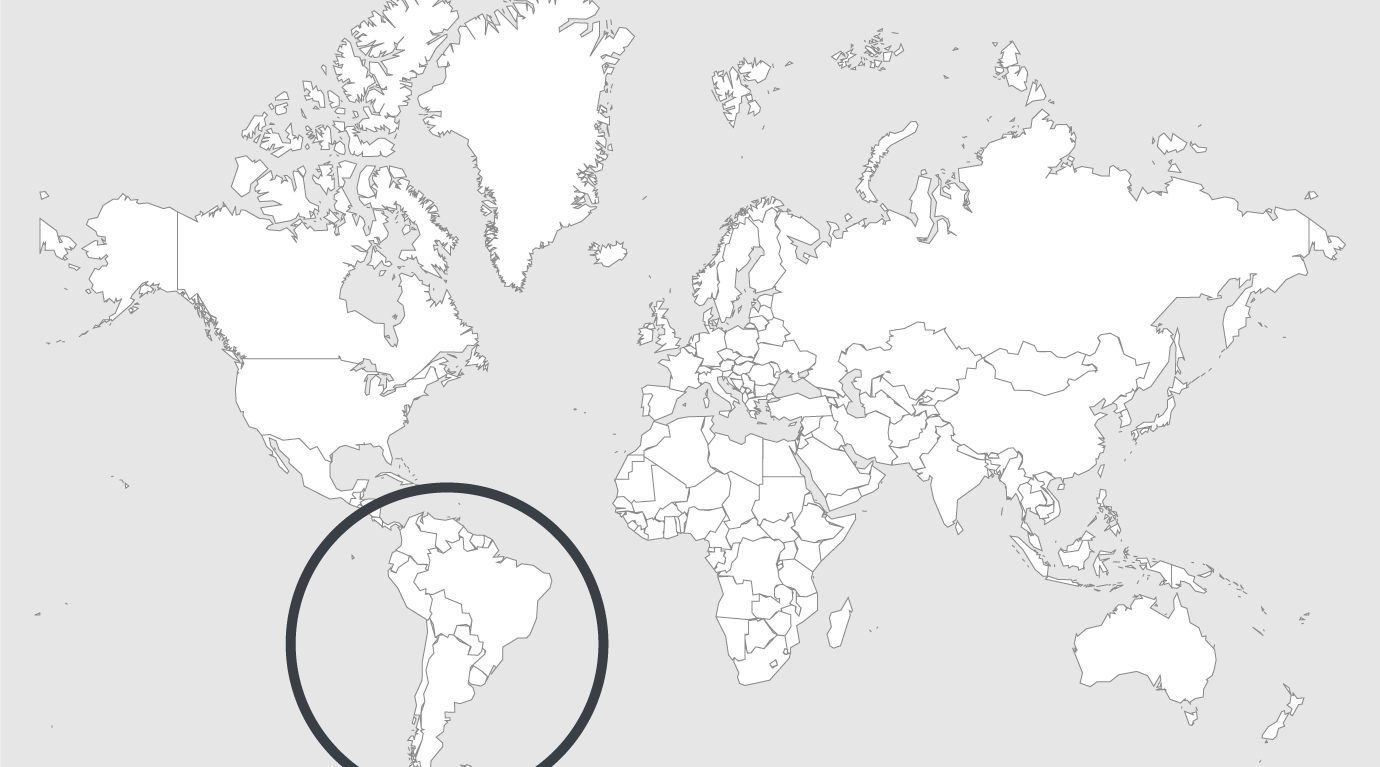
Explore
Colombia: coronavirus hits prison population hard
Critics say the government’s response to early warnings about the spread of COVID-19 in Colombian prisons was too little, too late.
Despite local and international warnings about the spread of coronavirus among vulnerable prison populations, Colombia has seen brutal outbreaks of the virus in at least nine of its detention facilities.
As parts of Colombia enter phase two of quarantine and the country begins to open up, the virus is still raging in its prisons. Massive overcrowding and inadequate sanitation have made it difficult to control the spread of COVID-19. These conditions are nothing new, but the virus is exacerbating them yet further. Colombian senator and human rights activist Iván Cepeda recently described the situation as a “humanitarian catastrophe” in an online discussion.
In early April, Human Rights Watch issued a call for Latin American prisons to “act immediately to avoid an entirely foreseeable health disaster.” It called out Colombia in particular, where on March 21, 23 inmates were killed and 83 were injured in La Modelo prison in Bogotá after prison populations across the country organised protests of unsanitary conditions, overcrowding and lack of access to water and COVID-19 protection.
Two days after the riots the government issued an emergency decree to allow the country’s prison authority, Inpec, to isolate or transfer the prisoners, make budget transfers and speed up the contract process. It did not allow for the speedy release of prisoners, nor did it make provisions for the many who are being held pre-trial.
Local lawyers, educators and politicians slammed the decree as too little, too late. “COVID-19 doesn’t wait, it requires action now,” said lawyer Yani Vallejo, a specialist in criminal procedural law. Speaking at a Facebook Live titled Prison Genocide in Colombia at the end of April, Vallejo said the decree was effectively useless. Indeed, since the decree was issued, the number of infected prisoners has risen dramatically. At Villavicencio prison, at least 878 inmates have tested positive for the virus — almost half of the prison’s residents.
Cepeda agreed that the decree didn’t provide a resolution for vulnerable prison populations. “Villavicencio is the blueprint of what is going to happen in the country,” he said.
Detainees being held at police stations who were still technically innocent should have been released to their homes, lawyer and criminal law lecturer Diana Restrepo said. “Throughout Colombia, families have been separated by quarantine. Imagine what it would be like to be the family of those in prison,” she said.
According to Andrew Coyle, Emeritus Professor of Prison Studies at King’s College London, up to 60% of people being held in Latin American prisons are awaiting trial and have not been convicted. That’s why activists were calling for their temporary release at the start of the outbreak. It would have both reduced overcrowding and reduced the risk for those individuals.
Overcrowded and inhumane
According to the World Prison Brief, Colombian prisons are more than 45% overcrowded. The official capacity of the prison system is 80,928, however as of April 30 the prison population was at 118,079. Little has changed since this 2015 piece was written.
El Tiempo visited the hardest-hit Villavicencio prison in Meta in early May — when the number of confirmed cases in the prison was just 421 — and described serious overcrowding. It said the prison was holding 1,773 inmates and 185 staff, despite the fact it was only built for 874 people. There, it described grim conditions in Cell Eight, the epicentre for the virus in the prison.
“This cell is a succession of gloomy bedrooms, with no doors and little ventilation,” the newspaper reported. Eight prisoners were sleeping in rooms built for four, and up to 18 slept in poorly-ventilated rooms built for 10. Newer inmates were forced to find room to sleep on the floor, in the halls or the bathrooms.
As of June 2, the prison had 878 confirmed cases of COVID-19, Meta governor Juan Guillermo Zuluaga tweeted. This represents more than 45% of the prison’s reported population. At least three inmates have died after contracting the virus in the prison, El Tiempo reports.
While the prison has had no new cases since May 21, Villavicencio mayor Felipe Harman wants more tests. Today he tweeted, “I urge the INS to take second samples, at least random ones, to be sure of the contagion situation in Villavicencio prison.”
Many have taken to the Meta governor’s Facebook page to express their frustration and concern. Gloria Guerrero said she had family members in the prison and begged the governor to “please do something.” However others feared that now the prisoners had been exposed, it would be unsafe to release even low-risk offenders back to their homes, as they may carry the virus. “They did nothing in the prison and let everyone catch it,” Nancy Daza said, adding that releasing prisoners now would be “chaotic” for Villavicencio.
Others raged that the government hadn’t acted sooner, despite warnings from local and international bodies. Nubia Mondragon wrote that the government was warned of what was happening but ignored it. “Today it’s just meetings and meetings and nothing – just words.”
Outbreaks throughout the country’s prisons
Other prisons around the country have also been hit with the virus, many of them due to infected prisoners being transferred from Villavicencio. This week saw another 86 confirmed cases in Cartagena’s Ternera prison, taking the total to 241. This represents about 10% of the current 2,385 inmates.
Further south on the border with Brazil, 143 out of 183 inmates had tested positive for coronavirus at the Leticia prison as of May 20. This represents 78% of the prison population there. A guard initially tested positive for the virus on April 24 after returning from Brazil, El Espectador reported. Over the following weeks, the number of infected people has shot up in the prison, with at least one death.
